with Christopher Hector and Roslyn Neave…
Back in 1991 one of those windows of opportunity flew open. The Hanoverian Verband’s annual study tour – a hands on learning experience in the heart of sporthorse breeding country.
Roslyn and I grabbed it…
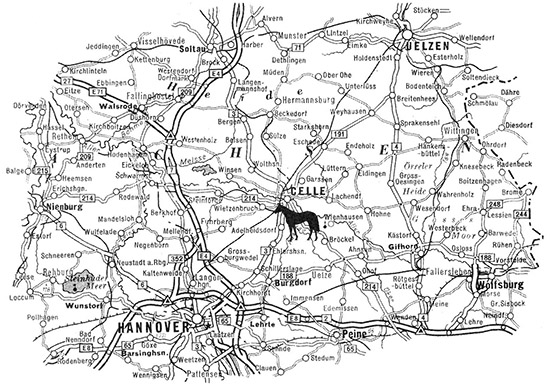
It’s day one of the Hanoverian Verband Breed Orientation course, and with the sort of organizational efficiency that you rather expected from the world’s slickest breed marketing organization, we have been picked up at our hotel and ferried to the Verband Headquarters, right on time.
What perhaps we hadn’t expected was our guide and mentor, Ludwig Christmann.

Ludwig is one of those naturally gentle people, with a warm, dry humour, and an awesome knowledge of horses, and Hanoverians.
The group is a truly international one: three of the most charming American ladies you could ever hope to meet- who carry a seemingly inexhaustible supply of candy, and threaten to go into withdrawal symptoms every now and then when they realise just how long they have gone without exercising their credit cards or saying the magic words ‘double big burger with … ‘, a jolly couple from Scotland determined to have a right good time – and learn as much as they can about the Hanoverian breed along the way, a Kiwi long time British resident who stands a Hanoverian stallion in the UK, and for the first time on the course, the southern hemisphere is represented, aside from Roz and myself, we have Ann Warren an experienced horse breeder, and part owner of the Hanoverian stallion Distelfrnk, from the North Island of New Zealand, and Jacki Boulter and Phil Curran from Hanover Park in Western Australia.
In his introductory lecture, Ludwig advances the thesis that while there are many breed societies in Germany, there are only three breeds – the Hanoverian, the Trakehner and the Holsteiner – “all the other breeds go to those three when you look at the pedigree. The Hanoverian goes back to the original horse of the district of Lower Saxony, with the addition of Trakehner and Thoroughbred, and now, Holsteiner, blood. Today 10 -15% of our mares are covered each season by Anglo-Arab and Thoroughbred stallions.”
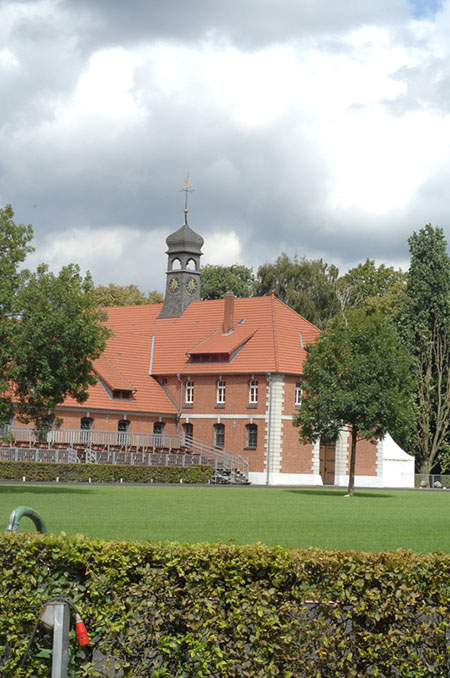
The State Stud at Celle
While the Hanoverian breeding area covers Lower Saxony, there is the curious anomaly that Oldenburg is part of that domain, and that the breeders have the option of being part of the Hanoverian system, and taking advantage of the stallions sent to the district by the State Stud at Celie, or breeding to the privately owned stallions covered by the Oldenburg book – or taking an each way bet and breeding to Hanoverian approved stallions standing at the private studs, and registering the stock in the Hanoverian or the Oldenburg books.
As early as the fifteenth century, the nobility in the Lower Saxony region were using Spanish horses (the predecessors of today’s Andalusian) to improve the local horses.
In 1735 the State Stud was founded and organized horse breeding was underway. Founded by the British King, George II (who was also the Elector of Hanover) with a breeding base of 12 Holstein stallions, the aim of the State Stud was to make good stallions available to the local farmer at an affordable fee – and the State Stud has that same aim almost three hundred years later.
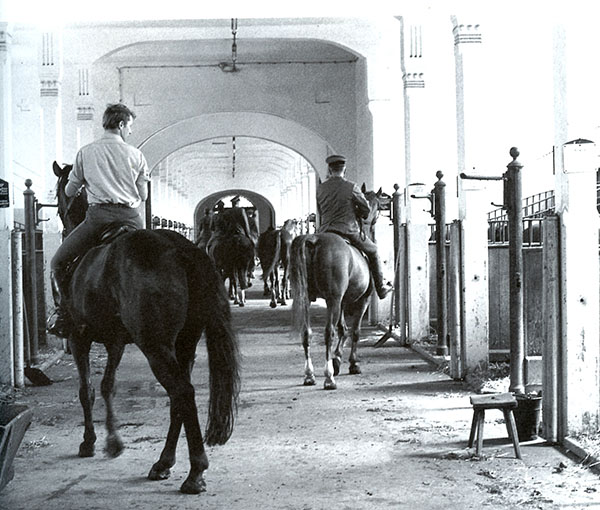
All the Hanoverian stallions in the State Stud stand for the same fee – DM680 – or DM580 to members of the Verband. Seventy to eighty percent of the mares in the district are owned by farmers, with each individual farmer owning an average of just under two mares.
There is some shift from the traditional farming base, some farmers are disappearing, and some sons are more interested in tractors than horses, which is a pity as this results in the loss of the specialised knowledge built up by breeding, often to the same mare family, over hundreds of years.
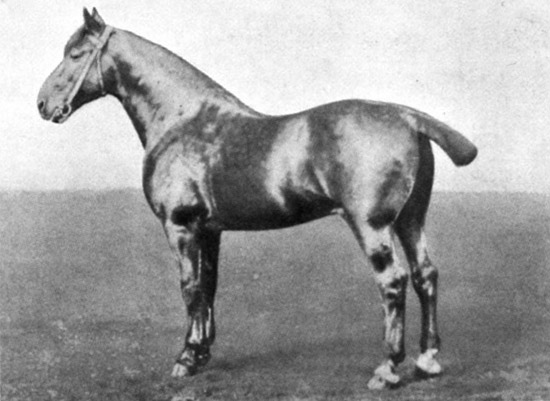
The heavier type, Excellenz
Over the years the type of horse bred has fluctuated according to the competing needs of the army and agriculture. In times of peace, the farmers wishes were met with a heavier type of horse, in times of tension, the lighter type more suited to cavalry work came to the fore.
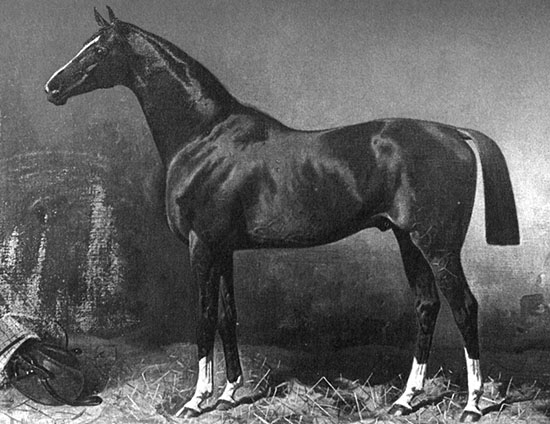
Kingdom, an influential Thoroughbred stallion in the nineteenth century…
In 1840 the Thoroughbred breed became very popular, so much so that in the Verden area almost half the mares were bred to Thoroughbred stallions.
After World War 1 with the disbanding of the cavalry units, the breeders once again started to produce a heavier sort of horse – although as always, local soil conditions also played a role. Breeders on the heavier soil close to the coast tended towards a heavier horse, while the Lüneburg and Verden areas always produced the more elegant type.
The Hanoverian was always a multipurpose animal, used for farm work, for the carriage and for riding. Even when the horse was primarily bred for agricultural work, the breeders strived to keep the movement of a good riding horse.
Because the mares had to work, they were selected for their character and willingness for the job.
Still it took quite a while from the founding of the State Stud in 1735, to the establishment of the Stud Book in 1888, to the formation of the Hanoverian Breed Society in 1922. Nowadays there are eight regional offices servicing 54 local breeding societies that are linked to the regional breeding stations.
From the State Stud at Celle, some 175 stallions are sent out each season to the breeding stations to cover the 10,000 or so Hanoverian mares. A further 3,500 mares are bred to private stallions. Each stallion averages 55 mares per season, and there is an upper limit of 200 mares for any one stallion in any one season.
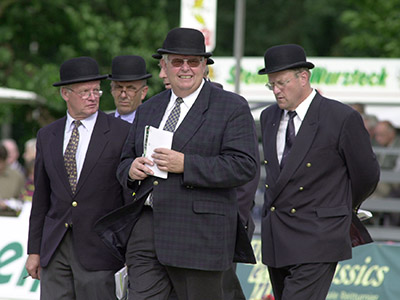
The then head of the Celle Stud, Burchard Bade
The operations of the State Stud are under the control of the Ministry of Agriculture, and it is not only the head of the Stud, Dr Bade who is a public servant – the stallions are too.
Similarly the Stallion Testing Station at Adelheidsdorf is directly controlled by the Ministry. ·
While Celle remains the focal point for Hanoverian breeding there has been an enormous growth in the number of private stallions in the past twenty years. In 1970 there were 155 State stallions, and 41 private; in 1990 the State stood 174, while the private breeders stood 189. However because the private stallions also cover many mares from other breed societies, the proportion of registered Hanoverian foals born remains 80% by State stallions to 20% by private.
Nowadays the Hanoverian breeders are encouraged to breed for one of the four major disciplines: dressage, showjumping, eventing or driving – rather than trying to breed for the horse that can do everything, although it is recognized that there are some especially valuable lines that produce both dressage and jumping horses.
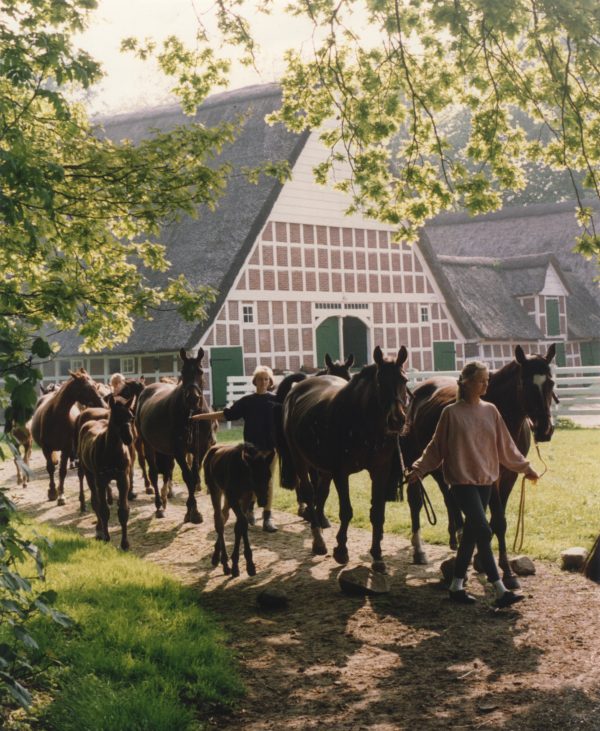
The selection process within the Hanoverian breed is an extensive one.
Let’s start with the colt foals. Each year some 4,000 colts are born. Initial inspection of the foals takes place by the time they are six months old – those deemed suitable can go on to the second step, the licensing inspection at the age of 30 months.
By now we have narrowed the field from 4000 to about 120, of whom 60 were licensed to proceed on up the ladder at the last Stallion Licensing.
There is one stallion licensing in October at which those presenting the stallions must agree to sell them either to the State Stud which has the first choice on ten stallions – or through a process of private negotiation in the case of licensed stallions not required by Dr Bade for Celle, or at auction in the case of the stallions who fail to pass the test. There is a later testing in December for colts whose owners do not wish to sell them.
The young stallions who receive initial approval are now allowed to cover 20 mares, before they must present themselves at a 100 day performance test Here the stallions are judged under saddle and free jumping for their potential as performance horses. Each year about 30 or 40 young stallions are introduced into the breed after having passed this selection process.
The last and most important step is the evaluation of the progeny of the new stallions – initially as weanlings, then as three-year-olds under saddle, and finally through an analysis of show results which through a mind numbing series of statistical formulae, produce a calculation of breeding values for dressage or jumping.
The first crop of each stallion is evaluated, but the Verband is careful not to rank the results.
As Ludwig explains: “The breeders must look at the first crop to see which mares go best with that stallion, so in the first crop we would not expect every cross to succeed, and to give a low rating to a new stallion on the basis of his frrst foals would mean that he would have no chance in his second season.”
For the four thousand or so filly foals the selection process is not quite so arduous. They too are inspected at six months, and then at three years go through their stud book inspection to decide whether they qualify as Head Stud book mares or must go into one of the lesser classifications.
They are shown as two-year-olds at the Mare Shows, and again as three-year-olds, when they have the opportunity to become Premium mares. They are also expected to take a Performance test for mares.
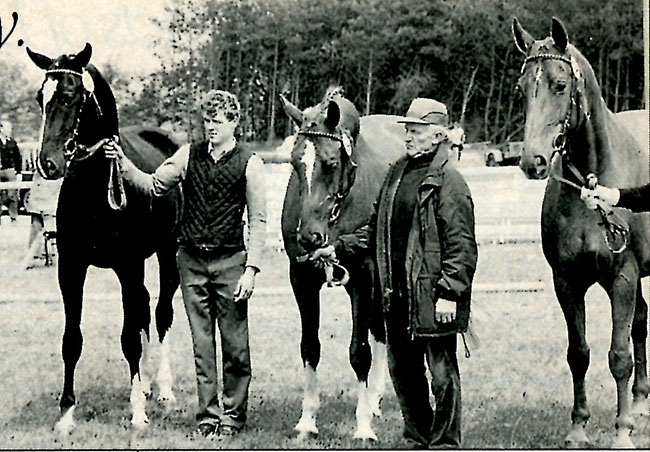
Back in 1991 showing mares was a family tradition…
Around 95% of the Hanoverian mares are in the Head Stud Book – indicated by the letter ‘H’ in their registration number, and to qualify they must score at least 5 in each of the six parts of the mare classification and earn an overall score of at least 6. The State Premiums are granted to the mares at the age of three or four, and carry a prize of DM600, partly from the State Ministry and partly from the Verband. To be awarded State Premium, the mare and her dam must be in the main stud book, must be covered at the latest as a four-year-old, must have at least one living foal during her frrst four years, must gain a 1A prize at a mare show, and must pass her performance test.
The owner of the mare must promise to present the mare at a mare show for the next three years; to keep the mare for three years and have her covered every year, to report any colt foals to the Manager of the State Stud, and if the owner does not wish to keep the colt for himself, must agree to sell the foal to Celle.
The Field Performance Test for mares judges the walk, trot and canter in hand and under saddle, with the scores of the test rider added to that of the judges on the ground. The mare is also free jumped – a change from the old system of testing jumping under saddle.
“We find under the new system many more mares are coming forward, and we see more emphasis on the riding aspect as against pure conformation. To ask a three-year-old mare to jump under saddle is too much of a strain, and anyway there is some research that indicates that free jumping is a better indicator of jumping breeding potential than jumping under saddle,” Ludwig explains.
Alternately, the breeder may send the mare for a three week station test, where again she is judged by both the trainer, and a panel of judges. To obtain a State Premium, the mare must achieve an overall score of 6.5 or an average score of 7 in the basic gaits, or rideability or jumping.
Ludwig’s lecture lasted a solid couple of hours, and you had already gained the impression that this course was to be no easy option PR exercise but a serious and in-depth learning experience.
Time out for lunch at the Verband before we wandered over to the little showing area in the Verband complex. Five test mares were brought out for us, and under Ludwig’s supervision we were invited to mark our own score charts.
First we were required to give a score (out of ten) for the head; neck; saddle position; frame; forelegs and hindlegs – and on the basis of those individual scores, assess a total score out of ten for conformation.
The conformation score is then added to scores (again out of ten) for breed type and sex type, correctness of gaits (how straight the movement is), swing and elasticity of the gaits (ie. how big the trot is), the walk, and general impression and development.
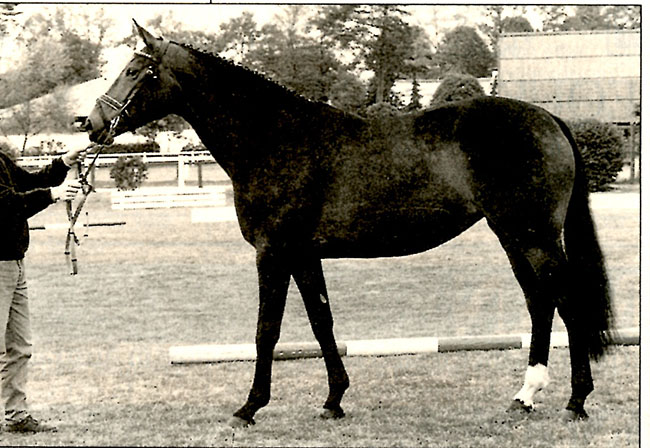
Our demonstration filly – by Shogun
Here are Ludwig’s scores for the final exhibit, a three-year-old mare by the Thoroughbred, Shogun. Head – 7 (‘friendly shape and a little long’), neck- 9 (‘light, comes out well from the shoulder, good size’), saddle position (‘When I first saw her I thought an 8, but after I saw her move, a 7’), frame- 7, forelegs- 7, hindlegs- 6 (‘straight hock, no angle’) for a total conformation score of 7.
For Hanoverian breeders, first appearance is as important as it is for us. Does the horse have presence and appeal? – you can forgive it some faults if it does. We look at the head and neck first, then the shoulder and saddle position. For the saddle position score think of where the rider will sit and if the legs will be in a good position to give the aids – it is here that you must assess the length of shoulder, straight shoulders don’t go with good saddle position or good movement Moving back to the loins, particular attention was paid to strength over the loins, although any roach backs were marked down.
Our stereotype of the Warmblood with horizontal short Araby hindquarters was not often found and when it was, was marked down heavily – the negative comment ‘too straight on the topline’ was a serious criticism. They look for short coupling (and were much more intolerant of long backs than judges in Australia would be) and well muscled hindquarters, especially in the forearm, thigh and gaskin.
Strangely however they were more tolerant of what we would consider a major fault – off set cannons- but only if they occurred in an otherwise stunning individual.
Ludwig really preferred the lighter more Thoroughbred type (as did most of the judges at the shows we were to attend), movement was crucially important, and we saw some truly stunning movers, with SOME knee action preferred, but elastic free action was what they really wanted, showing freedom and flexibility right through the body, especially through the back.
Certainly we were to look at the total movement of the horse, and just the foreleg flicking did not impress these connoisseurs of movement.
They are of course, able to be more choosy with movement because all the
horses can move a bit, leaving the judges to reward the real athletes. Leg touching was not in, and the horse is judged from one side only- stood up ‘open’ showing all four legs at once.
Surprisingly there is no score for the hoof – perhaps their softer going makes this a less crucial area.
It was a real eye opener, and the horses were handled and shown brilliantly at
our trial. Sadly we were to learn at our first real show, that this is the exception rather than the rule, and German farmers are a bit like farmers anywhere when it comes to handling stock – a bit rough and ready.
Enough for one day you might think?
Not on your lifel We were off to visit the local Stedebergen breeding station just on the outskirts of Verden. The 175-year-old stallion station stands six stallions:Prince Orac (TB), Aristokrat, Wenzel1,Grand Garcon, Maurice and Golfstrom 11.
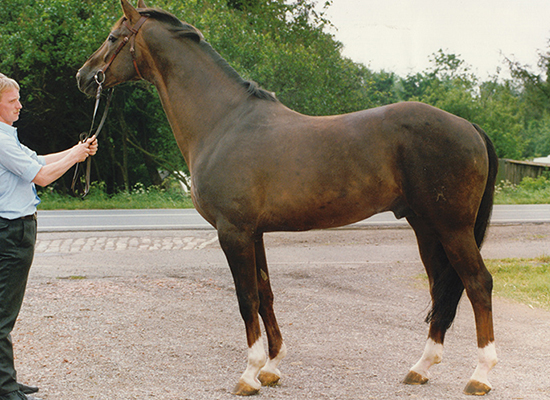
Fifteen-year-old Wenzel is one of the true stars of the Hanoverian stallion band, and it is no surprise that he reaches his limit of 200 mares every year. He is particularly noted as a sire of dressage horses, and is a glorious individual. The richest liver chestnut, even as a mature stallion he shows not the slightest sign of being gross – he is all quality, and knows it.
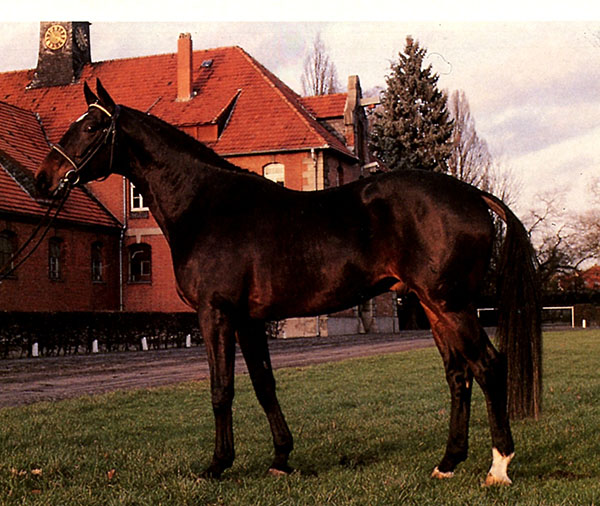
Maurice – by Matcho out of a Garibaldi II mare
Also up near the 200 mare mark is Maurice a five-year-old son of the French
Anglo-Arab, Matcho. The Hanoverian breeders like their touch of Arab blood,
but like it to be a couple of generations back in the pedigree, which is why they like Matcho so much, since in three generations of his pedigree, the pure Arabian occurs only once (his great grandmother, Olmeda), the rest are all Anglo Arabs. Certainly there is nothing ‘Araby’ about Maurice’s head, but he is another stunning crisp mover, and a very correct type of horse.
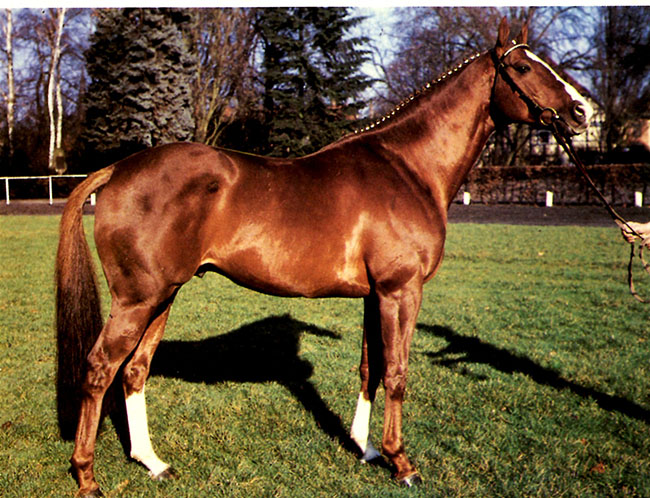
Prince Orac – Thoroughbred blood has always been important in Hanover
The Thoroughbred, Prince Orac is a very typey horse with excellent movement, but when they bring out Grand Garcon, Ludwig adds another word to his expanding dictionary of American / Australian slang – ‘clumpfer’.
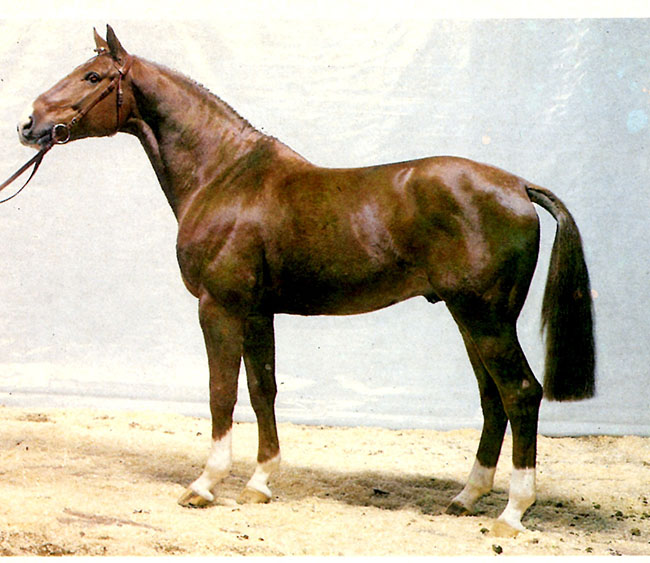
Grand Carcon – a bit too grand…
The truly amazing opportunity that the Hanoverian Breed Orientation course gives you is the chance to get your eye in on a huge collection of horses specifically bred for the Olympic disciplines. It also gives you the unique opportunity to see how a number of carefully selected stallions, and mare lines, can influence the outcome of a breeding program.
I venture to say that we saw more Warmblood horses in the first day than you would see in a year in Australia, and it wasn’t long before patterns were starting to emerge, and you were starting to see young stock of a consistent type, and starting to identify the bloodline type that you liked.
In the next article, we travel Lower Saxony, gaining first hand experience of judging at the Hanoverian mare shows.
Many of the top Celle stallions available in Australia today from IHB Go to: www.ihb.com.au Stallions like Quaterhall and more!
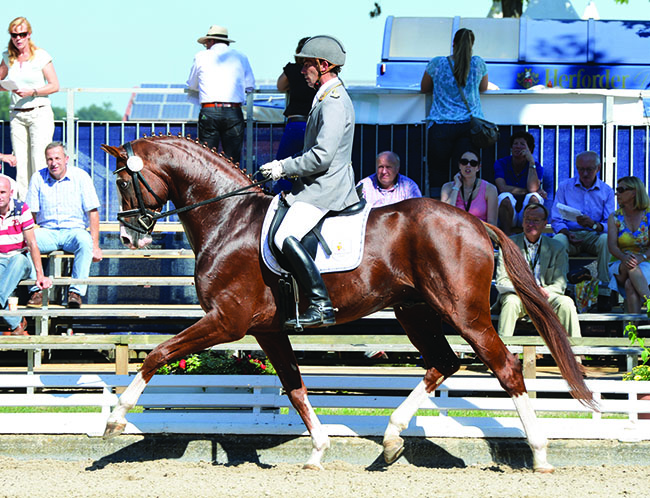
Or Don Frederico – if you want D line proven trainability
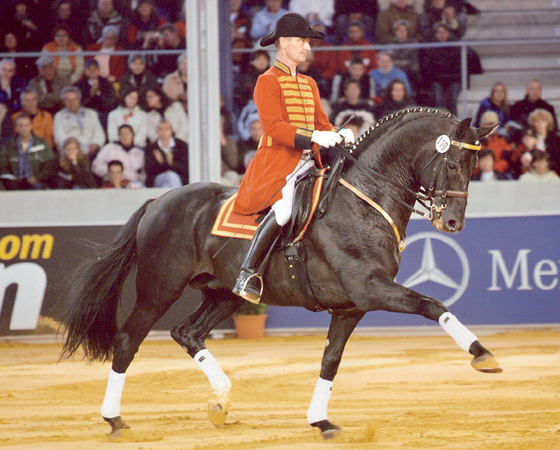
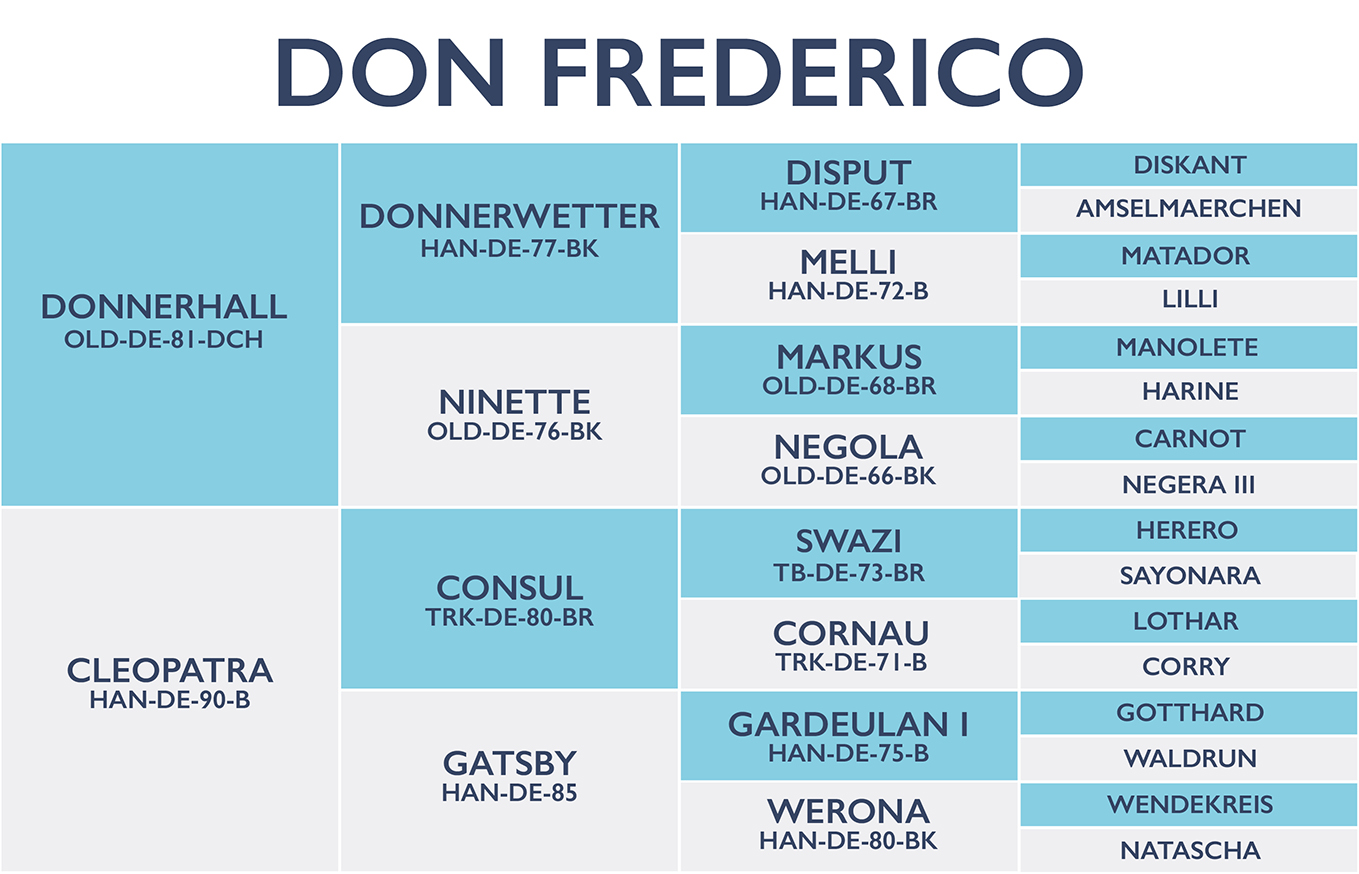

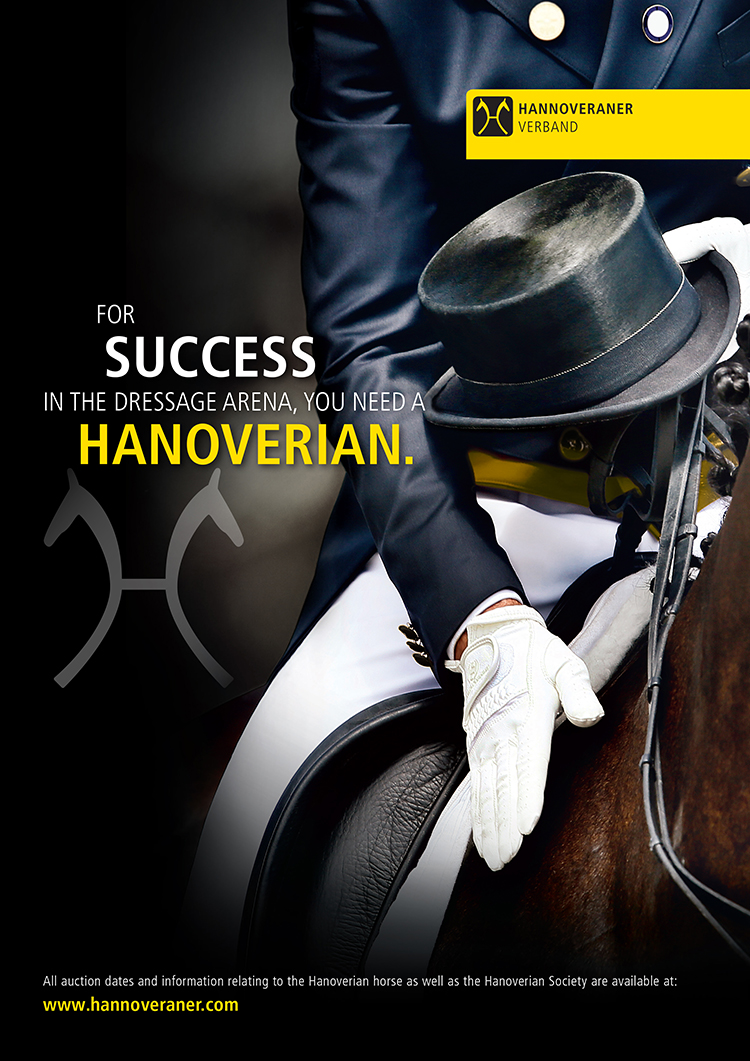
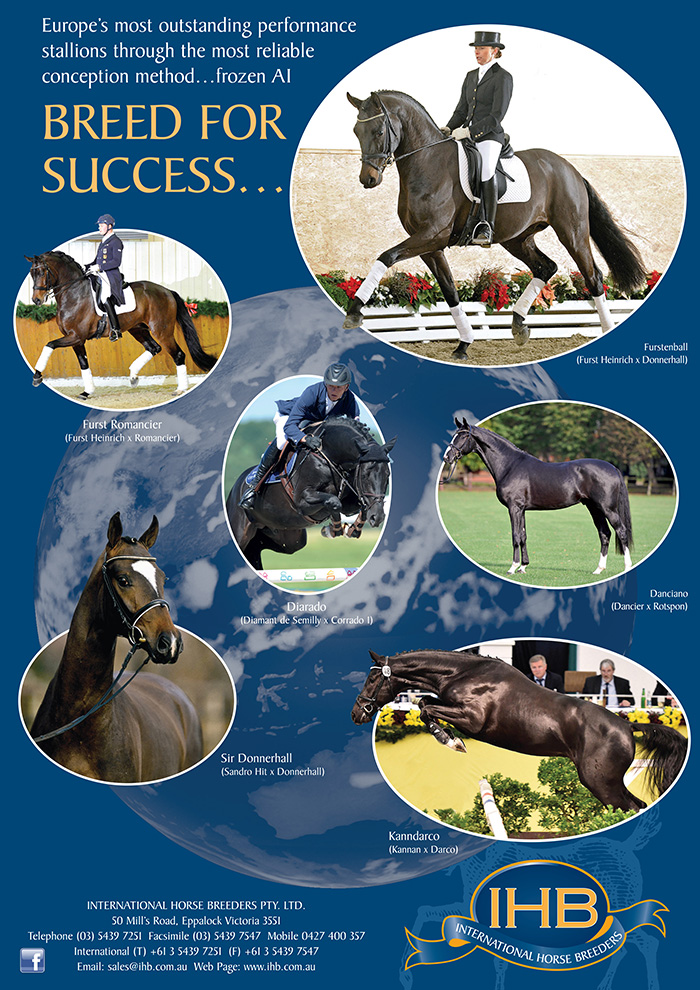
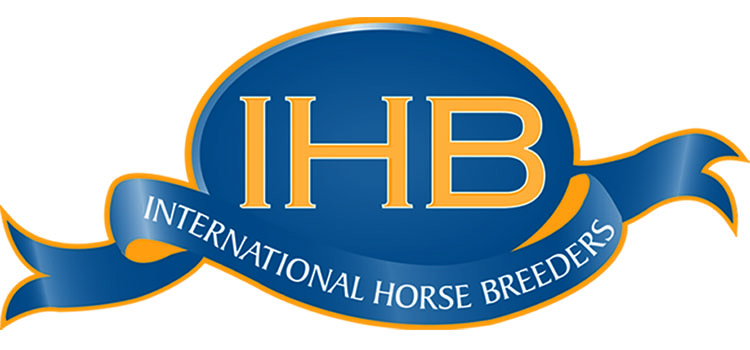
Loved the article. I was going through 2004/2005 Hengst Deutschlands this morning wondering where all those stallions have gone. The stallions important today from that book include Belissimo M, De Niro, Fuerst Heinrich which runs through many Schockemohle stallions standing today, Florencio, Riverside and Riccione, both by Regazzoni, Stedinger and Sandro Hit. The horse I missed watching years ago was Rockwell, sire of Rock Forever, grandsire of quite a few stallions such as Revolution.